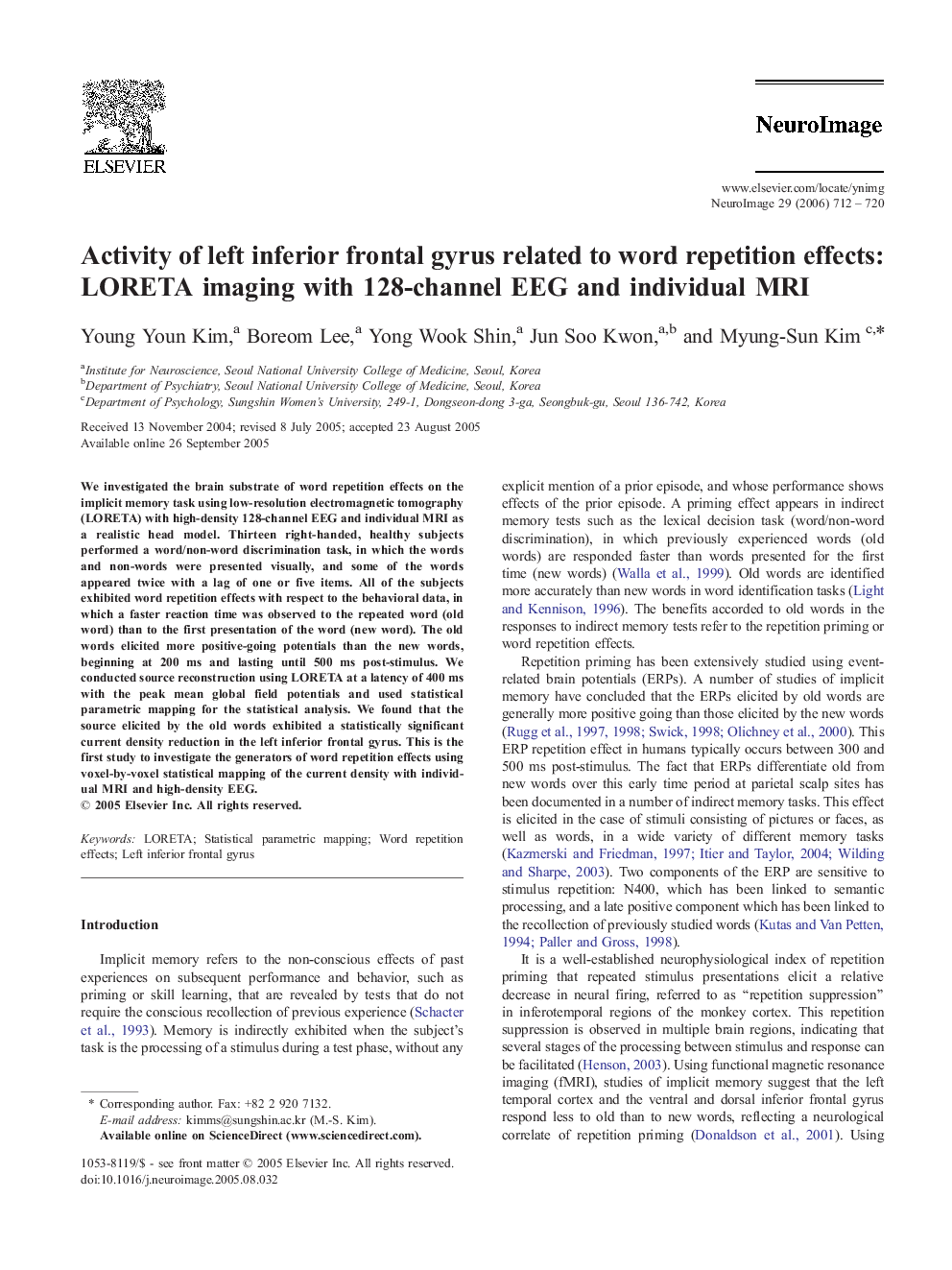| Article ID | Journal | Published Year | Pages | File Type |
|---|---|---|---|---|
| 3074486 | NeuroImage | 2006 | 9 Pages |
We investigated the brain substrate of word repetition effects on the implicit memory task using low-resolution electromagnetic tomography (LORETA) with high-density 128-channel EEG and individual MRI as a realistic head model. Thirteen right-handed, healthy subjects performed a word/non-word discrimination task, in which the words and non-words were presented visually, and some of the words appeared twice with a lag of one or five items. All of the subjects exhibited word repetition effects with respect to the behavioral data, in which a faster reaction time was observed to the repeated word (old word) than to the first presentation of the word (new word). The old words elicited more positive-going potentials than the new words, beginning at 200 ms and lasting until 500 ms post-stimulus. We conducted source reconstruction using LORETA at a latency of 400 ms with the peak mean global field potentials and used statistical parametric mapping for the statistical analysis. We found that the source elicited by the old words exhibited a statistically significant current density reduction in the left inferior frontal gyrus. This is the first study to investigate the generators of word repetition effects using voxel-by-voxel statistical mapping of the current density with individual MRI and high-density EEG.
